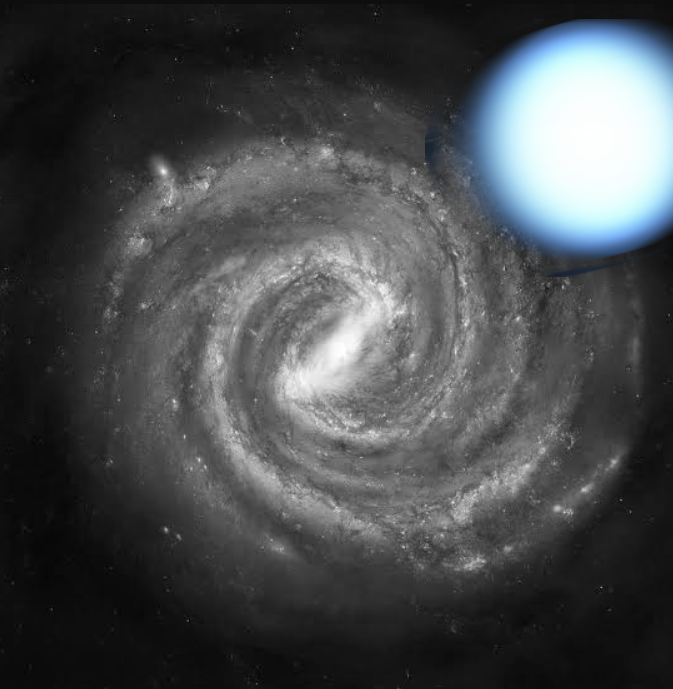Ultrafast star spotted
 Astronomers have spotted an ultrafast star travelling at 6 million km/h for the last five million years.
Astronomers have spotted an ultrafast star travelling at 6 million km/h for the last five million years.
Astronomers have wondered about high velocity stars since their discovery only two decades ago.
The newly-discovered star dubbed S5-HVS1 is unprecedented due to its high speed and close passage to the Earth, only 29 thousand light years away.
With this information, astronomers could track its journey back right into the centre of the Milky Way, where a 4 million solar mass black hole, known as Sagittarius A, lurks.
“This is super exciting, as we have long suspected that black holes can eject stars with very high velocities. However, we never had an unambiguous association of such a fast star with the Galactic Centre,” said Sergey Koposov, part of the Southern Stellar Stream Spectroscopic Survey (S5).
“We think the black hole ejected the star with a speed of thousands of kilometres per second about five million years ago. This ejection happened at the time when humanity’s ancestors were just learning to walk on two feet.”
Superfast stars can be ejected by black holes via the Hills Mechanism, proposed by astronomer Jack Hills thirty years ago.
Originally, S5-HSV1 lived with a companion in a binary system, but they strayed too close to Sagittarius A. In the gravitational tussle, the companion star was captured by the black hole, while S5-HVS1 was thrown out at extremely high speed.
“This is the first clear demonstration of the Hills Mechanism in action,” said Ting Li from Carnegie Observatories and Princeton University, and leader of the S5 Collaboration.
“Seeing this star is really amazing”, she added, “as we know it must have formed in the Galactic Centre, a place very different to our local environment. It is a visitor from a strange land.”
The discovery of S5-HVS1 was made with the 3.9m Anglo-Australian Telescope (AAT) near Coonabarabran in NSW.
The results have been published in Monthly Notices of the Royal Astronomical Society.







 Print
Print